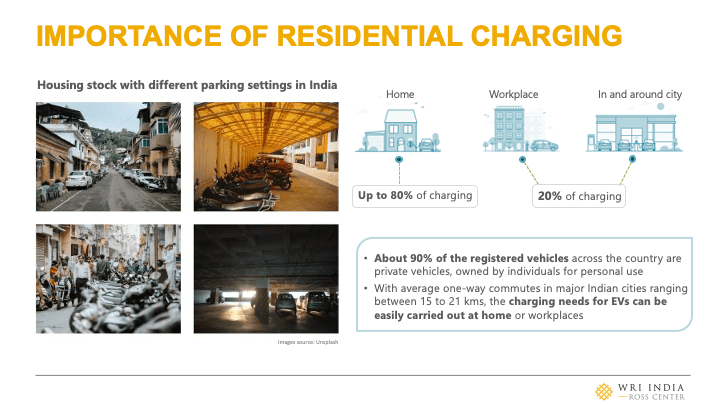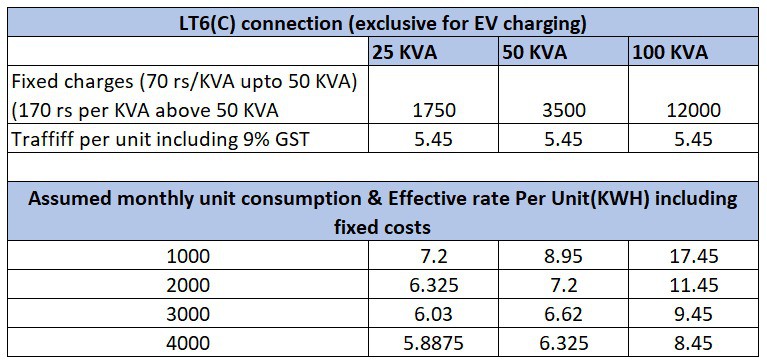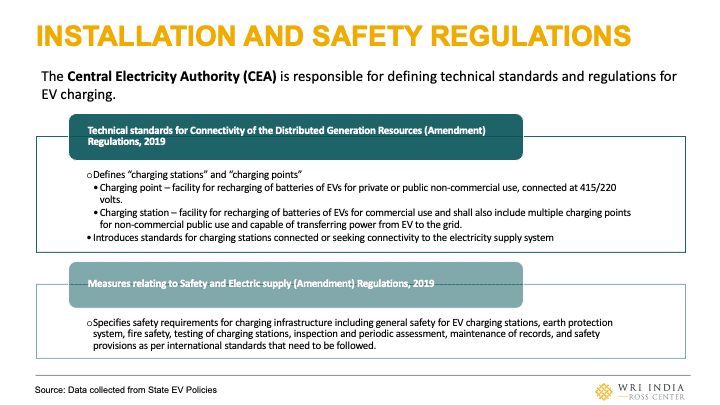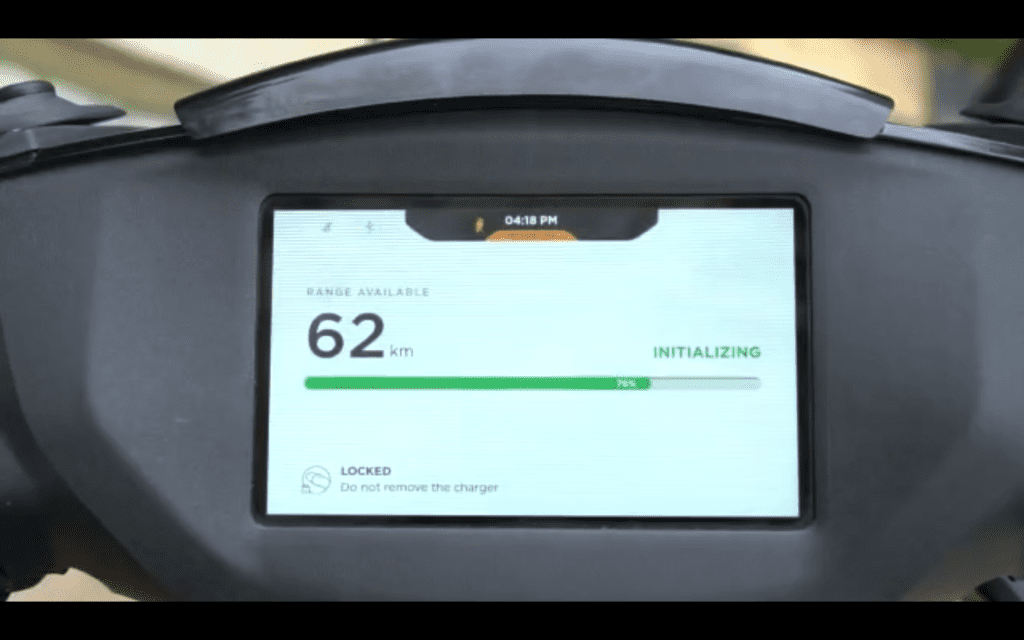To achieve targets under the Karnataka Electric Vehicle and Energy Storage Policy, BESCOM has set up electric vehicle (EV) charging stations at 74 locations in Bengaluru, with 136 charging points. It plans to set up 300 more charging stations in collaboration with BMRCL (Bengaluru Metro Rail Corporation Ltd), BBMP, apartment RWAs (Resident Welfare Associations), etc. GoK is amending the building bylaws to have malls, apartments, and high rise buildings provide dedicated EV charging points in their parking lots.
Meanwhile, apartment complexes are already witnessing an increase in EV adoption among residents, leading to a demand for charging stations. To facilitate smoother adoption of charging stations, the Bangalore Apartments’ Federation (BAF) launched the E-Vaahana campaign on December 2nd, on National Pollution Control Day. The campaign includes a series of webinars and creation of knowledge base. It was launched with other stakeholders such as energy/industry departments of the Government of Karnataka, BESCOM, WRI (World Resources Institute) India, Apartment ADDA, Citizen Matters and EV charging vendors.
The following FAQ is based on the inaugural E-Vaahana webinar held on December 2nd.
Why are community charging stations important?
According to Chaitanya Kanuri, Senior Manager with the Sustainable Cities and Transport team at WRI India, over 90% of EVs sold in India are personal vehicles. Of these, 80% are two-wheelers, and the rest four-wheelers. So, if the 2030 e-mobility transition target is to be achieved, personal mobility has to be prioritised.
Studies show that 80% of EV charging is done at home, and hence residential charging infrastructure becomes a decision factor during purchase, Chaitanya explained.

Read more : EV Charging: Challenges and options in gated communities
How to set up a community EV charging station?
To set up any infrastructure/asset, an RWA focuses on policy and the required permissions. So what does the policy state? According to guidelines from the Centre’s MoHUA (Ministry of Housing and Urban Affairs) in 2019, all new commercial and residential high rises are mandated to earmark 20% of their parking space for EV charging.
As per a notification from KERC (Karnataka Electricity Regulatory Commission), dated August 22, 2019, any apartment built after the date of the notification has to provide at least two charging stations if the apartment’s requisitioned load is 250 KW or above, or if its built-up area exceeds 5,000 sq m. Buildings constructed before the notification are exempted.
Karnataka is the first state to implement an EV policy, in 2017. BESCOM is the nodal agency for setting up the EV charging infrastructure in the State.
Tariff structure
A special category of BESCOM LT6 connection at Rs 5 per unit + fixed charges is available for EV charging stations. This tariff is lower than that of an individual connection (LT2). The following table estimates the cost per unit for the LT6 connection.

At the E-Vaahana campaign launch, BESCOM MD Rajendra Cholan said that BESCOM has tied up with the think tank CSTEP (Centre for Study of Science, Technology and Policy) to conduct an innovative pilot study on directly using solar energy to charge EVs.
Read more : Guide to setting up Electric Vehicle Charging Stations in your community
For community charging stations in apartments, after determining the number of charging stations required, a Class A electrical contractor has to assess the load requirement. Based on this, the apartment association has to submit a letter to the area BESCOM office seeking approval for a new LT6 connection to set up the charging station. The entire exercise could take a couple of months.
While the government encourages community charging, individual charging is not barred, as long as the sanctioned load can take it. An individual house owner can submit a letter to BESCOM for an increase in the sanction load, for a single phase connection of 5 kW or up to 10 kW.
When should an RWA opt for community charging?
First step is to assess the demand:
- Estimate the number of EVs in the community, and the corresponding power requirement
- Determine the ownership and billing models
- Select the charging location
To calculate the current load, check the following:
- (Number of apartments X sanctioned load per apartment) + common area load (lighting, STP, OWC, pumps, etc,)
- Transformer capacity
- Electricity bill to check the peak/maximum load
If only up to 5% of vehicles in the community are going to be EV, chargers in individual parking lots may be sufficient.
Key points to keep in mind

Location of the charging station should ideally be determined based on accessibility; it should be located closest to the electrical panel. Ensure strong network signals when installing charging stations in the basement, since the charging is app-based.
With any electrical equipment/panel, special care should be taken to ensure that proper earthing is done and a fire extinguisher is kept in the vicinity. However, EV chargers usually go through vigorous testing and have very few chances of catching fire.
Activation of the charging station should require the scanning of a QR code and giving a command for charging. This ensures that someone accidentally touching the charging pins would not suffer electric shock.

Technology
BAF has tied up with vendors who provide special offers to the federation’s members.
- Most vendors offer both Opex and Capex models to choose from.
- From the perspective of load utilisation and cost, having multiple slow chargers is better than a fast charger.
- Fast DC charging is expensive and has drawbacks in the long run, as it effects EV battery life.
Following is BAF’s list of vendors and the options they offer.
| Sl no | Organisation | Type of chargers | Capex | Opex |
| 1 | Ather Energy Pvt Ltd | 3.3 kWh AC LEV charger 3.3 kWh AC Ather DOT charger | YES | YES |
| 2 | Ola Electric Mobility Pvt Ltd | 3.3 AC LEV charger | YES | NA |
| 3 | Tata Power Company Ltd | Delta/Exicom 7.4 kW AC charger, only for cars 3.3 kW AC charger 25 kW DC charger | YES | YES |
| 4 | Kazam EV Tech Pvt Ltd | MINI 3.3 kW Kazam 3.3 kW | YES | YES |
| 5 | Ujoy Technology Pvt Ltd – RevOS | AC 3.3 kW AC 7 kW AC 25 kW DC 50 kW | YES | NA |
| 6 | Magenta EV Solutions – | 3.3 kW AC – two-wheeler single socket 7.4 kW AC – four-wheeler | YES | NA |
| 7 | Amplify Cleantech Solutions Pvt Ltd – EVRE | Bolt 3.3 kW AC 7.4 kW AC 7 kW – 22 kW AC – Type 2 – only for four-wheelers | YES | YES |
| 8 | EV Motors India Pvt Ltd – PlugNGo | PlugNgo EVM Hybrid AC charger Type 2 charger kW AC001 charger – 3.3 kW | YES | NA |
| 9 | Elektropod Technologies Pvt Ltd | Two-wheeler and four-wheeler model (3.3kW) | YES | NA |
| 10 | SunAP Ecopower | FIMER, wall-mounted, single phase charger – four-wheeler FIMER, wall-mounted, three phase charger – four-wheeler FIMER, stand option, with single or dual chargers, 22 kW, three phase with Type 2 sockets or cord, suitable for all cars single or dual charging parallel, dynamic | YES | NA |
“Will all these measures scale up to meet the growing demand when the number of EVs increase, especially in existing buildings where space is at a premium? Retrofitting to accommodate a large number of charging stations in individual parking spaces will require further subsidies by the government.” said an EV user at the webinar.
You can see the entire knowledge base on EV by BAF here.
[Addendum: The table showing the tariffs for LT6 connections has been replaced with a more accurate version.]
Wonderful and very informative article. We need such forums to educate help people adopt to EV’s